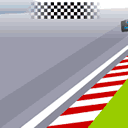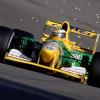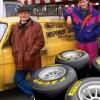Of recent, most on my contributions in the Racing Comments section of this forum (as opposed to my previous 'home' in the Nostalgia section) seem to have to do with bemoaning the quality of racing this season with the high-downforce technical regulations that have improved the show when one car is being driven flat-out by itself, but seem to have had a negative effect on the on-circuit action. I'm aware that, as someone in his thirties who has followed the sport for over 25 years( ![]() ), I'm at risk of 'rose-tinted glasses syndrome' which, for those who don't know, makes one tend to think everything was better in the past than it is now; however, I'm convinced that, until fairly recently, the point at which a driver closing-in on a competitor in front ceases to gain on them due to turbulence/dirty air reducing the downforce available to them was around half a second, whereas, judging by Monaco and Hungary, at slower-speed circuits it's now around a second, sometimes slightly more.
), I'm at risk of 'rose-tinted glasses syndrome' which, for those who don't know, makes one tend to think everything was better in the past than it is now; however, I'm convinced that, until fairly recently, the point at which a driver closing-in on a competitor in front ceases to gain on them due to turbulence/dirty air reducing the downforce available to them was around half a second, whereas, judging by Monaco and Hungary, at slower-speed circuits it's now around a second, sometimes slightly more.
Given that I'm not an aerodynamicist, I am unqualified to suggest what regulation changes ought to be made to reduce this effect. I seem to recall Gary Anderson arguing shortly after the 2009 technical regulation changes explaining that the wider, lower front wings were encouraging developments in terms of design complexity and philosophy that increased sensitivity to turbulent air, and, as I respect his background and credentials, I'm taking his word for it.
As an illustration of what I mean, here's a newly-uploaded video of an on-track battle from the Silverstone round of the historic F1 championship. The camera car appears to be a ground-effect Williams FW07 or FW08; if so, it will have ground-effect tunnels, but not the sliding skirts which sealed them, and, as a consequence, won't be generating as much overall downforce as it does in period.
https://www.youtube....h?v=nSVl7fWxcVA
Note that the camera car is able to close on the car in front through some high- and medium-speed corners.
What do other members think? Should the FIA and Liberty Media consider new Technical Regulations that promote such racing, or is that a retrograde step which would damage F1's credibility and relevance? Ought old gits like me accept that modern Formula 1 is different from that of the past, and should we learn to love a less 'raw' version of the sport in which pit strategy, safety car windows and tyre deg. are the be-all-and-end-all of competition?

































